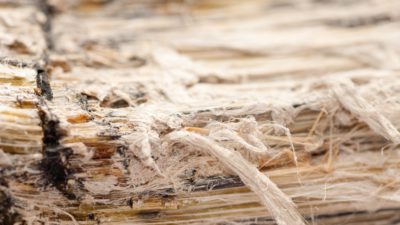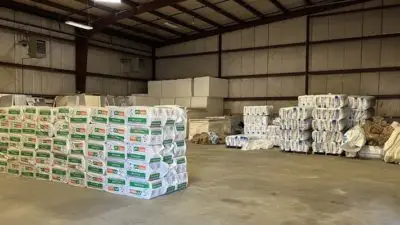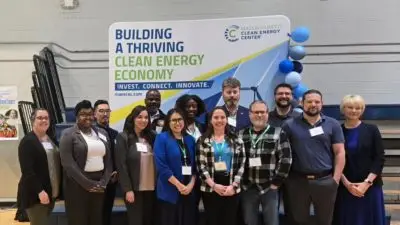Home energy efficiency can save you energy and money year-round but sometimes it’s difficult to know where to start or what to do. If you look in the right spots, you’ll find that your kitchen has many opportunities for energy savings.
Install LED Lighting
According to the U.S. Department of Energy (DOE), LED lights use at least 75% less energy and last up to 25 times longer than incandescent bulbs. Energy-efficient LEDs emit little heat while incandescents release 90% of their used energy as heat. Whether it’s the main lighting fixture in your kitchen or smaller accent or task lights, switching to LED bulbs will help you save every time you switch the lights on. Just think – the average home in the U.S. has 40 light sockets, and if replaced with LED bulbs, a homeowner could save more than $100 per year.
Use Advanced Power Strips
Is your coffee maker or microwave plugged in around the clock? There are about 65 electrical devices plugged into the average U.S. home and even if your appliances are turned off, they continue to draw power. The National Resources Defense Council (NRDC) states that about 23% of the electricity used in U.S. homes is from devices in standby mode! If you have an appliance-heavy counter, consider utilizing an advanced power strip to reduce your phantom energy load. According to the National Renewable Energy Laboratory (NREL), phantom loads can equal up to $200 annually in energy costs for an average home.
Install a Faucet Aerator
A faucet aerator limits the water flow from your sink, without compromising function, by creating a mixture of air and water. It can reduce water flow to 1.5 gallons per minute or less from the standard 2.2 gallons per minute, according to the NRDC, allowing you to run the faucet for longer while using less water. The U.S. Environmental Protection Agency (EPA) says that replacing inefficient faucets and aerators can save an average family 700 gallons of water per year.
Turn on Your Ceiling Fan
Do you have a ceiling fan in your kitchen area? If so, make sure that it’s spinning in a clockwise direction – yes, ceiling fans are made for winter, too! Set your fan on a low speed so that it moves the warm air from the ceiling down to where you and your family are in the kitchen. According to the U.S. DOE, ceiling fans work best in rooms with ceilings at least 8 feet high. No ceiling fan in the kitchen? Apply the same concept to other rooms in your home!
Use Your Dishwasher
Did you know that an energy-efficient dishwasher costs about $35 per year to run? If you think washing by hand is saving you energy and money, think again! According to ENERGY STAR, washing your dishes in an energy-efficient dishwasher, instead of washing by hand, can lower your energy bills by approximately $130 a year. It can take as little as 3 gallons per load with a dishwasher and up to 27 gallons when you wash by hand. Just make sure to always wash full loads – just doing that can avoid 100 pounds of CO2 pollution from going into the atmosphere every year.
Lower Your Water Heater Temperature
According to the U.S. Energy Information Administration (EIA), producing hot water accounts for 18% of residential energy use. While your water heater is not in your kitchen, you use hot water for washing dishes among other tasks. You can save money by turning down the temperature on your water heater without sacrificing the heat you count on in the kitchen – and throughout the rest of your house! Many homes have their water heaters set at 140 degrees, when 120 degrees is sufficient for typical household tasks.
Look at Your Refrigerator
According to the NRDC, more than 1/3 of U.S. homes have a refrigerator that is more than 10 years old. If you’re looking to replace your refrigerator, a certified energy-efficient model is about 9% more efficient than typical models, says ENERGY STAR, and can save you about $220 over a decade or so of use. Other ways to save energy include placing your fridge away from heat sources like an oven, minimizing the amount of time the doors are open, allowing enough space for circulation behind the appliance, and checking that the door seals are airtight.
Get Energy-Efficient Windows
According to the U.S. DOE, heat gain and loss through residential windows are responsible for about 30% of heating and cooling energy use. Not looking to replace your windows? Air sealing is a great way to save energy and money and it’s offered at no-cost for Massachusetts residents here. Your home will be more comfortable during all seasons and you’ll see the savings pile up. Curtains can also help you save money and energy year-round. During the winter, a typical curtain can reduce heat loss from a warm room up to 10%, says the U.S. DOE. Close all window coverings at night and leave them closed on windows that don’t receive sunlight during the day.
If you’re interested in making your kitchen (or entire home) more energy efficient, a Mass Save® no-cost Home Energy Assessment can help. It’s available to Massachusetts homeowners and renters and you can get advanced power strips, faucet aerators, and air sealing at no-cost to you! There are also 0% financing options and big rebates for home energy efficiency upgrades.
Sign up here for your Home Energy Assessment and we’ll show you how your home is consuming and losing energy and how you can save – starting from day one!








